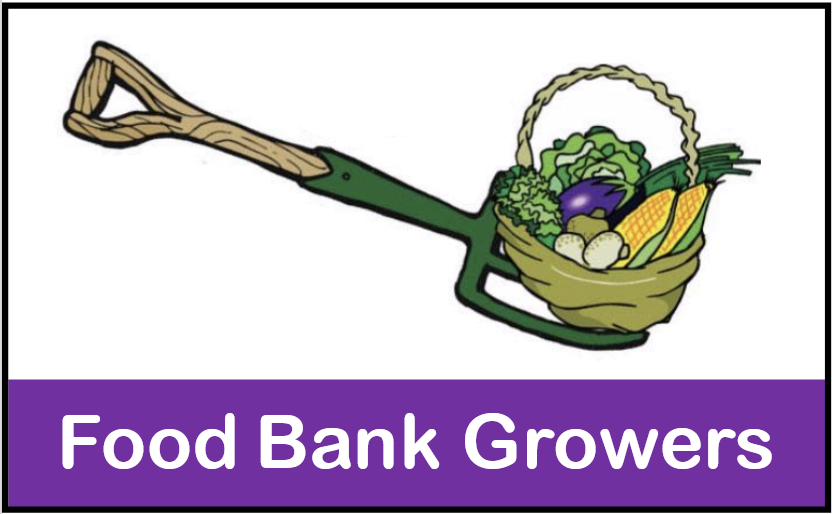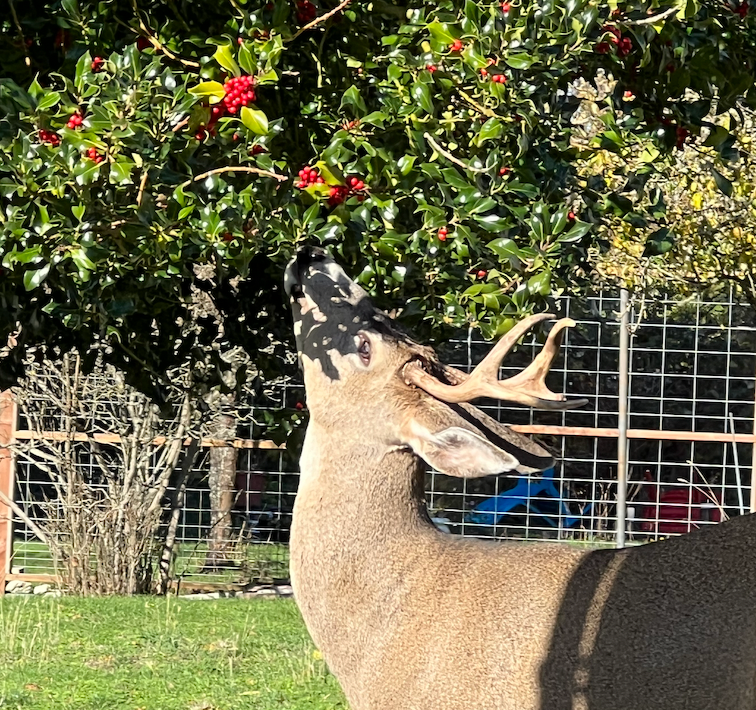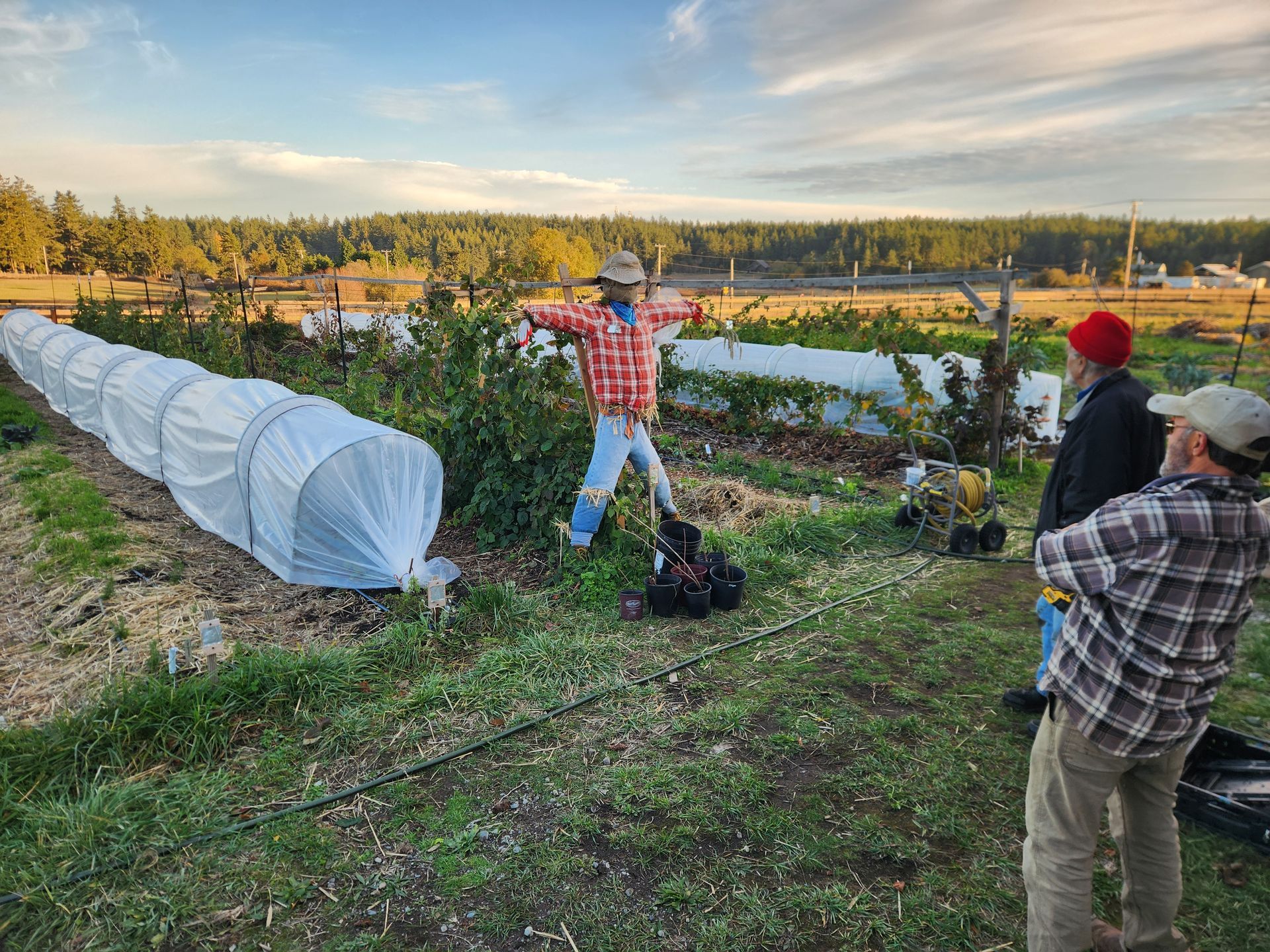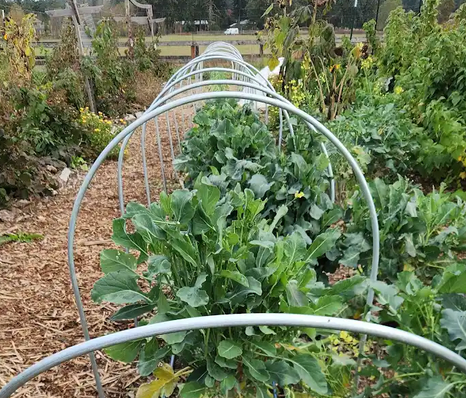Newsletter September 2023
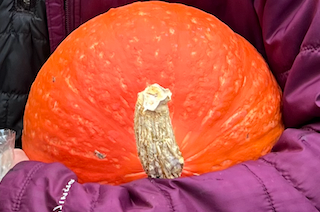
Busy Month
- In the Garden this month…
- Year-to-Date Harvest Numbers
- On the Calendar - Upcoming Events
- Recent Postings
- How to Volunteer
In the Garden this September - By Dianna Wiklund, FBG Garden Coordinator
September temperatures will be in the normal range but slightly damper than usual for here. What this means is the daily highs will be around 66° F and lows are 55 °F. There should be more rain but not enough to quit watering. The light sprinkles forecast will not help much with our gardens or the local fire danger.
September is another really busy month for gardeners. There is still a lot to harvest and preserve, cover cropping, and winter gardening to set up. It is time again to think about and set up season extenders. This is a good time to plant your perennials and overwintering annuals.
Let us look at our Autumn tasks:
Harvest: The last of the green beans and corn will come in this month. Also many of our fruit trees will be dropping their summer loads. (try to catch them before they hit the ground or the deer get them.) The rest of the potatoes will be ready as will many of our brassicas. It is also time for tomato and zucchini overload. Enjoy them now while they are freshest. The fall greens will start coming in and hopefully continue throughout the fall into winter.
Planting: Yes there is still time to plant for fall and winter harvest. Both perennials and annuals can be planted now.
Early this month you can direct seed or transplant beets and salad greens under cloches or in a greenhouse.
Late in the month plant overwintering veggies for harvest next spring. Planting salad greens, beets, carrots, snow peas as well as grasses like wheat, barley, oats and rye now will give you a chance at an early start next year. The grasses and legumes also make good cover crops.
Perennials benefit from fall planting. It gives their roots a couple of months to get established before it gets too dark to grow. Leave as many leaves on your deciduous trees and bushes as possible when you transplant them so they can feed their roots. Give them a good start before winter closes in and everything shuts down for a few months.
Winter Gardening: Winter spacing is different from summer. All the plants need more room for air circulation and for cloches or frames to cover them. Give each plant about twice as much room as you would in spring. When our winters are mild many things will hold in the garden all winter long. When our winters are cold not as much survives but we will never really know until spring. I have had some amazing stuff take off and grow like crazy in March.
Season extenders: Floating row covers or just old sheets can help keep plants from frost damage. Cloches can be made from clear plastic or glass bottles. Sizes can be anything from a two liter soda bottle to a 5 gallon water jug. A wooden frame or a straw bale frame with an old window can work for a cold frame to help plants survive our winters. A hoop house can be low and cover just one row or larger to cover multiple beds. It can be covered with floating row covers or greenhouse plastic. Extending our growing season could become very important in the coming years with food scarcity increasing world wide. Practicing now may help us keep our families and community fed and healthy in the years to come.
Happy Gardening!
Have questions/comments?
Dianna can be reached at: FBGgardencoordinator@gmail.com
Year-to-Date Harvest -
9,776.5 pounds
3162 Volunteer Hours
2586 Transplant Starts.
All the gardens are in high gear with TOO MUCH OF EVERYTHING. Isn’t it nice to live in a place that grows on YOU! Thank you for the generosity of your time.
Upcoming Events
Click for full monthly calendar of opportunities - gardening, harvesting, gleaning…
(Located on the front page of FoodBankGrowers.org website.)
- September 23 - Port Townsend Farmer’s Market
- Come out and see us at our booth.
- August - October, Gleaning begins
- If you’d like to be a gleaner of backyard orchards this year, learn more HERE and sign up to get email notifications of upcoming picks.
Recent Postings on FoodBankGrowers.org
Goosefoot Free Veggie Boxes Feed the Community
Volunteers Needed for:
- Garden Managers -- Each garden needs a point person -- someone who can point to what to do next… This year we're partnering new Garden Managers with experienced ones for every step. Between them, Dianna, and the Monthly "to dos", you'll have everything you need to produce baskets full of produce.
- Growers - - Learn how to grow fresh food for the Food Banks while learning how to grow food for yourself at home. We guarantee the every day you'll learn something new. All gardens will need help -- the more volunteers, the easier and more fun the work becomes. Go to the MAP SECTION of the website and locate a garden near you. Stay at one, or rotate through many. Hours differ by garden.
- Harvesters - Each garden will need harvesters to pick and prepare the produce for the Food Bank distribution. Hours differ by garden.
- Gleaners - The season has started and the plums are perfect. Volunteer at at PTgleaning@gmail.com for donating a fruit tree’s fruit or gleaning.
.
